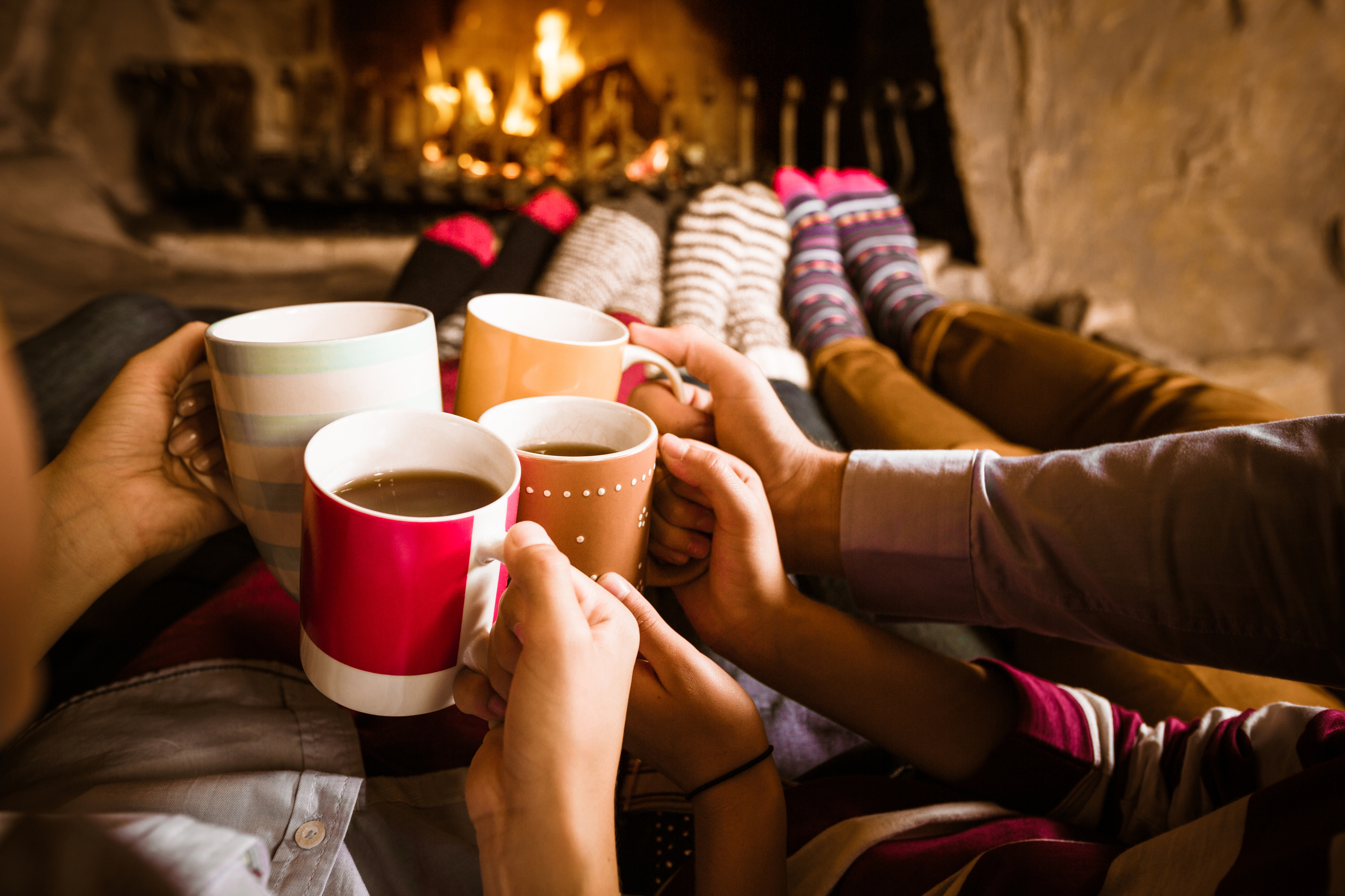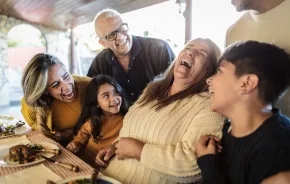
I’m writing from a cozy spot in front of the fireplace, lanterns glowing nearby. There are soft blankets and pillows scattered around for any impromptu snuggles and storytimes. I’ve placed as many candles on elevated (aka childproof) surfaces as possible, and I take pleasure even in the act of lighting them. It’s as if watching the wick take the flame is evidence of the cozy warmth of the season, proof that home can be one of the best places to be.
As Americans, we’ve long lived busyness, the myth that the holiday season must come with stress and pressure. But what if the antidote to the hustle and bustle of the holiday season can be found in a little Scandinavian word? What if by pulling on our thickest sweaters and pouring a steaming cup of cocoa, we can embrace something called hygge (pronounced HOO-gah)?
Hygge: More than just cozy
Hygge — the Danish term for a cozy, warm lifestyle and an emphasis on well-being — is embraced throughout Scandinavia. Now it’s catching on in the United States. But hygge can be complex to explain. It’s about more than cozy things like candles and cocoa, after all.
“Hygge creates a space to stop, slow down and appreciate the simple — and arguably the most important — things in life,” says Line Larsen of the Northwest Danish Association, which is based in Seattle. “This is especially valuable in the midst of stressful times.”
Like much of 2016, perhaps?
“I think one of the reasons why hygge has become this thing is there are so many anxieties in the world right now about what’s going on,” says Trine Hahnemann of Denmark, a cook and author of Scandinavian Comfort Food: Embracing the Art of Hygge. “People are not really feeling comfortable with things, and they are stressed out in their lives.”
Hahnemann thinks many look to Scandinavia, with its shorter work hours and world-renowned school systems; they figure that the region has things figured out so why not try something like hygge? Of course, Hahnemann notes, the perception isn‘t always reality.
“I‘m not sure they want to know how [many] taxes we pay,” she says with a chuckle.
“But that the idea of hygge,” she continues, “that [idea of] you have time at home and you light candles and you make tea and coffee and you sit down with your family — [the Danes] really do that still. We are such a home culture still. And I think people are very fascinated and have that dream.”
Banishing busy
Curious if the idea of hygge could be the antidote to the stress and frenzy of the holidays and how to incorporate it into my own life, I reached out to the Nordic Heritage Museum in Ballard, a historic Seattle neighborhood with strong Scandinavian roots.
“I think the way to create ‘hyggelige’ moments during the holiday season is to slow down and focus on creating unique moments with your friends and family,” says executive assistant musuem Kirstine Bendix Knudsen. “The American [holidays] are very mainstream and commercial-oriented. I think the key to more ‘hygge’ is to celebrate the [holidays] your way: bake a different type of cookie than everybody else, fill your home with nice aromas and candlelight and invite your friends for a nice get together.”
This, as you can imagine, is ideal when you’ve got kids at home. Since hygge has a lot to do with connection, embracing it is likely to create lasting memories and perhaps even inspire family traditions. Plus, embracing hygge is easy to do, says Melissa Bahen, Oregon-based author of Scandinavian Gatherings and blog Lulu the Baker.
“One of our favorite easy traditions — and one that fits in perfectly with the idea of hygge — is to sit down with our kids for just a few minutes each night before bedtime to read a holiday picture book together,” she says. “The older kids love it as much as the little ones do ... It's a nice, quiet moment of cozy togetherness during the busy holiday season.”
No matter the tradition, by slowing down and spending quality time together you’re likely to create an environment that feels safe, secure and loving — exactly what kids crave.
For me, this holiday I want to spend as much time as possible in the kitchen with my family, spinning sugar and butter into a variety of treats. It’s not really about the cookies themselves; it’s about the time together. It’s about balance, making sure that we eat plenty of homecooked meals amid a flurry of parties. It’s about the memories, the small things, that will hopefully stay with us because they’re connected to a feeling of love.











